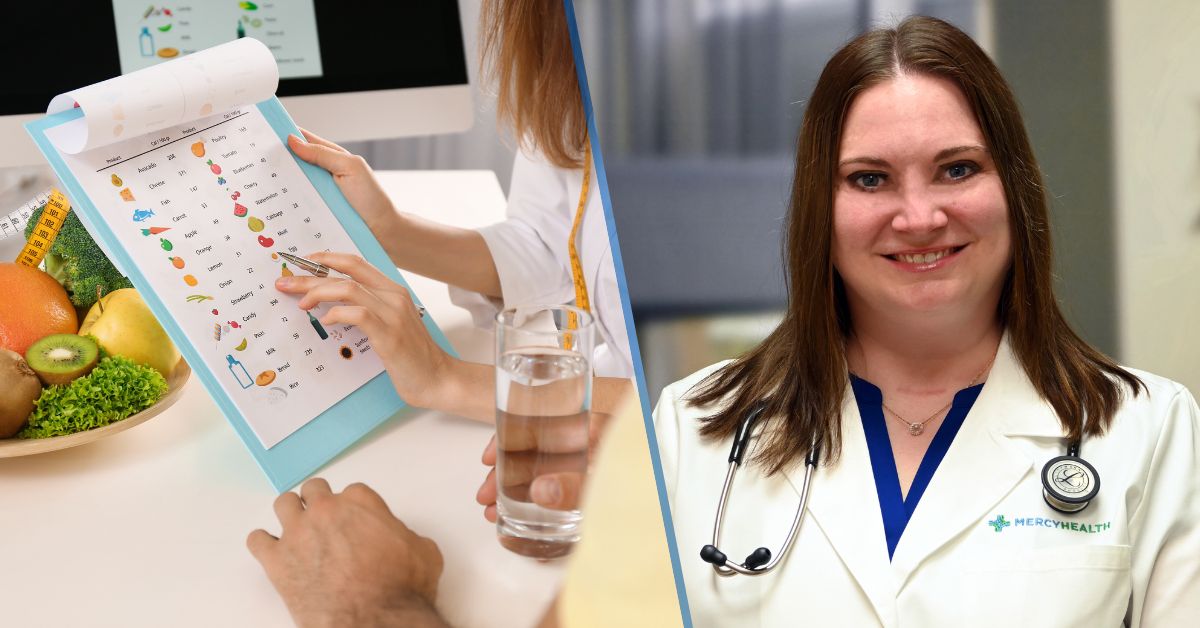It’s normal to feel anxious and nervous sometimes. Everyone feels a little anxiety in response to a problem or something that’s upsetting. But there’s a difference between feeling anxious periodically and chronic anxiety that impacts your day-to-day life. Sometimes, it’s necessary to ask – how do I know if I have anxiety?
Anxiety is a common mental health problem among adults in the United States. In fact, about 1 in 5 adults experiences anxiety each year. This means if you know 10 adults, two of them might be dealing with anxiety.
Feeling anxious most of the time, day after day, is not normal. When anxiety is extreme, it can disrupt your daily life. It may make it hard to work, go to school and function normally. It’s important to know that anxiety is a normal stress reaction, but when it becomes overwhelming or lasts a long time, it’s helpful to seek support.
What is anxiety?
Anxiety is an emotional reaction to a problem or situation and is part of your body’s natural “fight or flight” response. This response helps keep you safe.
Anxiety usually involves feeling tense and having worried thoughts. It’s normal for blood pressure to rise or your heart to race when you feel anxious. This happens because you think about things that worry or scare you. This is a sympathetic nervous system response responsible for triggering the “fight or flight” reaction.
“Anxiety can make daily life difficult. People with anxiety might feel very worried, nervous or on edge most of the time,” says Todd Simmons, MD, a psychiatrist at Mercy Health – BHI St. Rita’s Psychiatry in our Lima market. “They might find it hard to relax, focus or sleep well. Sometimes, anxiety can cause physical symptoms, like a fast heartbeat or sweating.”
How do I know if I have anxiety?
If you have anxiety, you might notice these symptoms:
- Avoiding situations that cause anxious thoughts
- Excessive worry about the immediate future and the long-term future
- Racing thoughts about all of the things that can go wrong
- Thoughts about dying because of a specific situation or because of physical symptoms
Anxiety can also involve some physical symptoms that include:
- Diarrhea or constipation
- Difficulty falling asleep or staying asleep
- Feeling physically agitated
- Increased heart rate and high blood pressure
- Muscle tension
- Nausea and vomiting
- Shortness of breath
- Sweating
Types of anxiety disorders
Anxiety disorders are among the most common mental health conditions, affecting millions of people worldwide. Understanding their differences can help you and a mental health professional determine the most effective treatment.
- Generalized anxiety disorder (GAD): Characterized by excessive and persistent worry about a variety of topics, such as work, health or everyday responsibilities, that interferes with daily functioning. People with GAD often struggle to control their worry. They may also have physical symptoms like restlessness, fatigue, muscle tension or trouble sleeping.
- Panic disorder: Panic disorder involves recurring panic attacks – sudden episodes of intense fear or discomfort that peak within minutes. Symptoms of a panic attack include heart palpitations, shortness of breath, dizziness and a feeling of losing control. Fear of future attacks can lead to significant lifestyle changes or avoidance behaviors.
- Social anxiety disorder: Social anxiety disorder, also called social phobia, is a strong fear of social situations. People with this disorder worry that others will judge, embarrass, or humiliate them. This fear can lead to avoidance of social interactions, negatively impacting relationships, education or work.
- Specific phobias: Sometimes, your anxiety is focused on something definitive. Phobias are intense, irrational fears of particular objects, animals or situations, such as heights, spiders or flying. Exposure to the feared trigger often causes immediate and overwhelming anxiety, leading to avoidance behaviors.
- Obsessive-compulsive disorder (OCD): While no longer classified strictly under anxiety disorders in the DSM-5, OCD shares many similarities. It involves intrusive thoughts (obsessions) and repetitive behaviors or mental acts (compulsions) performed to reduce distress.
- Post-traumatic stress disorder (PTSD): PTSD can develop after experiencing or witnessing a traumatic event. Symptoms include flashbacks, nightmares, hypervigilance and avoidance of reminders of the trauma. Like OCD, experts now categorize PTSD separately, but it shares overlapping features with anxiety disorders.
- Separation anxiety disorder: Often associated with children, separation anxiety disorder can also affect adults. It involves excessive fear or distress about being apart from loved ones or home. This can lead to physical symptoms or clingy behavior.
How do I know if I have anxiety?
Although you may not be asking yourself, someone you love could be and need your guidance.
“How do I know if I have anxiety?” It’s easy to find yourself asking this. Anxiety can be both exhausting and confusing. It’s also common for people to hide anxiety from others. On the outside, they appear comfortable and at ease with life. On the inside, though, they feel intense fear.
Look for these clues:
- A preoccupation with details and the need to control all aspects of a situation
- Avoiding going to new places or meeting new people
- Difficulty making decisions
- Overgeneralizing situations and seeing harm or danger in everything
- Preferring safe spaces, avoiding contact and avoiding specific situations
- Unexpected aggression or anger
- Unexpected sadness and tears
Severe anxiety symptoms
Severe anxiety can feel debilitating and it’s usually easy to recognize when it’s happening. If you’re dealing with severe anxiety, you’ll feel emotional and physical symptoms at the same time.
These symptoms include:
- A sense of unreality as if the situation is a dream
- Chest tightness or pain
- Chills
- Fast breathing rate and heart rate
- Fear of choking
- Panic attacks
- Fear of losing control or dying
- Feeling frozen and unable to move
- Nausea
- Overwhelming terror
- Sweating and hot flashes
- Trembling and shaking
- Trouble breathing
What is an anxiety attack?
An anxiety attack is when the anxiety associated with the trigger becomes severe and debilitating. It can cause both physical and emotional feelings. A certain situation, fear or pattern of worrying thoughts can trigger an attack.
Common triggers include:
- Caffeine
- Chronic pain
- Phobias
- Reminders of traumatic experiences
- Social or stressful situations
If you feel an anxiety attack coming, you may be able to take steps to feel better. It may be possible to stop the attack from happening entirely, or you might be able to make it less severe.
Try these tips:
- Do something relaxing, such as taking a warm bath or meditating.
- Slow your breathing and take deep breaths.
- Tell yourself that you’re feeling anxious but that the feelings will pass.
- Try to feel your feelings and think your thoughts without reacting negatively to them.
- Avoid social situations that trigger these reactions until you are able to calm yourself.
Treatments for anxiety disorders
Anxiety disorders are highly treatable, and many individuals find relief through a combination of therapies tailored to their needs. Leaving an anxiety disorder untreated can lead to you feeling worse over time. The most common treatments for anxiety disorders include:
- Cognitive-behavioral therapy (CBT): CBT is the gold standard for treating anxiety. It helps individuals identify and challenge negative thought patterns and develop healthier coping strategies. Exposure therapy, a form of CBT, is particularly effective for specific phobias and social anxiety.
- Medications: Doctors commonly prescribe medications like selective serotonin reuptake inhibitors (SSRIs) and serotonin-norepinephrine reuptake inhibitors (SNRIs) for anxiety. These medications help regulate brain chemistry and reduce symptoms. People may use benzodiazepines for short-term relief, but they are less common because of the risk of dependence.
- Lifestyle changes: Regular exercise, mindfulness meditation and adequate sleep can significantly reduce anxiety symptoms. Avoiding excessive caffeine, alcohol or drugs also helps improve overall mental health.
- Support groups and counseling: Talking about experiences in support groups or counseling can offer comfort and helpful ways to manage anxiety.
How we can help
“While each of these treatments can be beneficial on their own, evidence suggests that a combination of therapies often yields the best results,” Dr. Simmons says. “For example, combining medication with psychotherapy can enhance treatment efficacy and lead to more sustained improvements in symptoms.”
Working closely with your health care team to identify the most appropriate treatment plan tailored to your specific needs is essential. This collaborative approach ensures that all aspects of your condition are addressed, optimizing your path to recovery and well-being.
Although anxiety can feel overwhelming, there are many ways to calm your mind. Reducing sources of stress is crucial, and exercising regularly helps with symptoms, too.
Need additional help managing your anxiety? Learn more about the integrated behavioral and mental health services we offer at Mercy Health.






